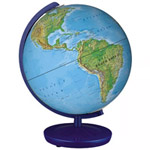Global Integrative Studies, School of

School of Global Integrative Studies: Faculty Publications
Document Type
Article
Date of this Version
2005
Citation
Environmental Archaeology 10:2 (2005), pp. 127–142.
doi: 10.1179/env.2005.10.2.127
Abstract
Excavations in 1990 in North-West Iceland documented a stratified series of small turf structures and associated midden deposits at the eroding beach at Akurvík which date from the 11th–13th to the 15th–16th centuries AD. The site reflects a long series of small discontinuous occupations, probably associated with seasonal fishing. The shell sand matrix had allowed excellent organic preservation, and an archaeofauna of more than 100,000 identifiable fragments was recovered. The collections are dominated by fish, mainly Atlantic cod, but substantial amounts of whale bone suggest extensive exploitation of strandings or active whaling. This paper briefly summarizes the excavation results, presents a zooarchaeological analysis of the two largest radiocarbon dated contexts, and places the Akurvík collections in the wider context of intra-Icelandic and interregional trade in preserved fish. Analysis of the Akurvík collection and comparison with other Icelandic collections from both inland and coastal sites dating from the 9th to 19th centuries AD both reinforces evidence for an early, pre-Hanseatic internal Icelandic fish trade and supports historical documentation of Icelandic participation in the growing international fish trade of the late Middle Ages.
Included in
Archaeological Anthropology Commons, Cultural History Commons, International and Area Studies Commons, Nature and Society Relations Commons


Comments
Copyright © 2005 Taylor & Francis. Used by permission.